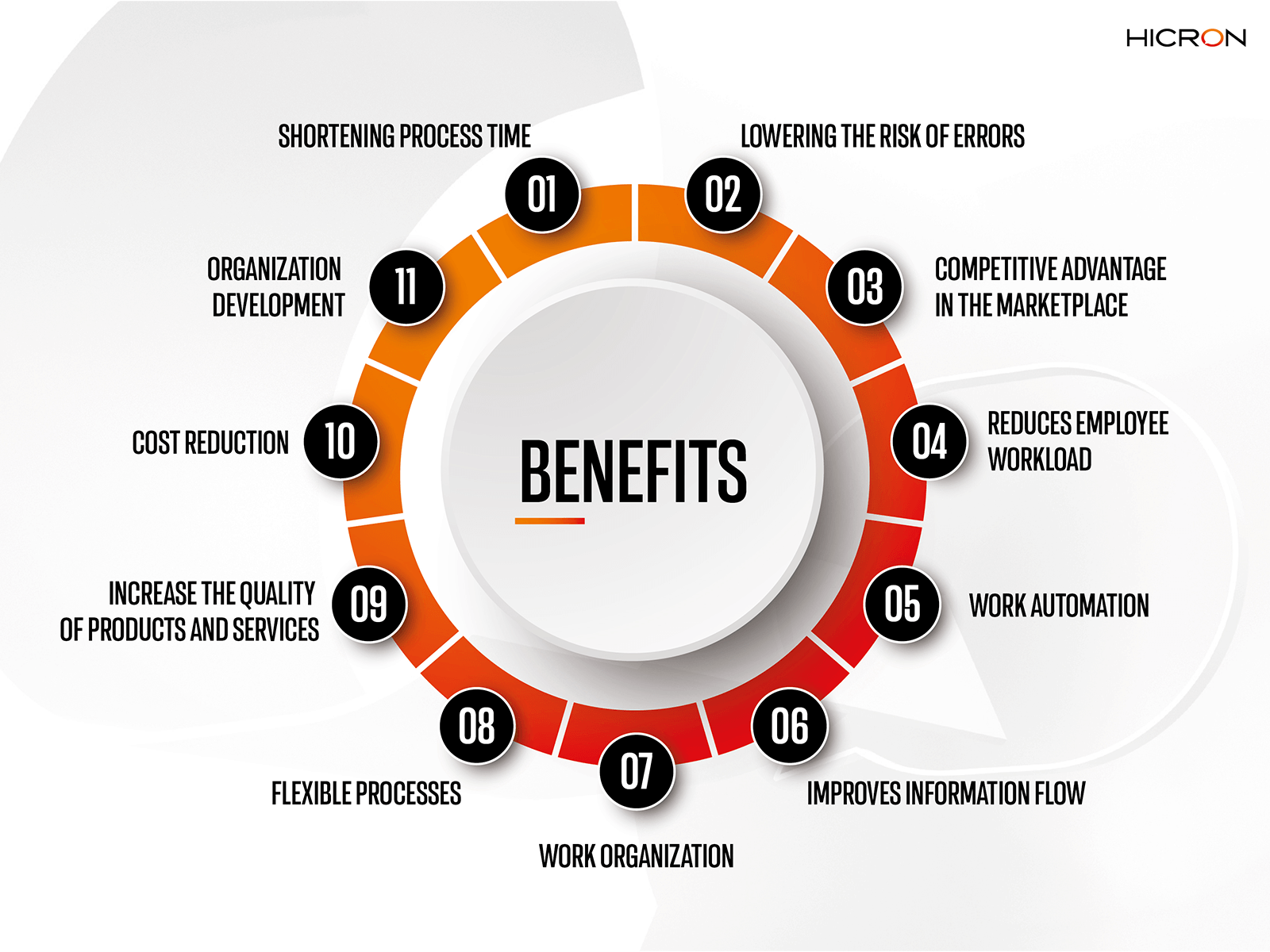Optimization of processes in a company – what is it?
Business process optimization includes all activities serving to improve the efficiency of business processes. The goal is to achieve the best results with the least amount of effort. Optimization also promotes the improvement of end‑customer satisfaction. It involves a number of parameters and is done across multiple levels.
Optimizing a company’s processes brings many benefits, shortening process time, lowering the risk of errors, and offering a competitive advantage in the marketplace. It also reduces employee workload, automates work, and improves information flow, making the processes more organized and flexible.

Principles of process optimization
There are several steps to process optimization. Before improvements can be introduced, existing processes must be identified and thoroughly analyzed in order to pinpoint areas in need of improvement. It is worth noting that concentrating the effort on a single set of activities is more beneficial than attempting to optimize multiple processes at once.
The next step is to create an initial optimization plan and select methods and measures to achieve the goal. Subsequently, efficiency-enhancing solutions can be implemented. Optimizing a company’s processes is an ongoing endeavor. It requires monitoring the results of the implemented changes to assess their effectiveness. It is worthwhile to make it an integral part of the organization’s activities.
Process optimization methods – automation
Improving process efficiency requires a variety of methods, including procedural adjustments, employee training, the adoption of new tools, and automation. For example, harnessing advanced technologies, such as innovative data collection and analysis systems like SAP, can be used to automate processes, thereby elevating their efficiency.
Optimization methods using artificial intelligence significantly speed up workflows and help reduce errors. Automation, a key facet of modern operations management, allows employees to be delegated to more challenging and valuable tasks. In turn, the implementation of advanced algorithms and solutions based on machine learning enables the analysis of vast data sets, making it easier to predict customer behavior, forecast demand, personalize offers, identify trends, and optimize inventory.





